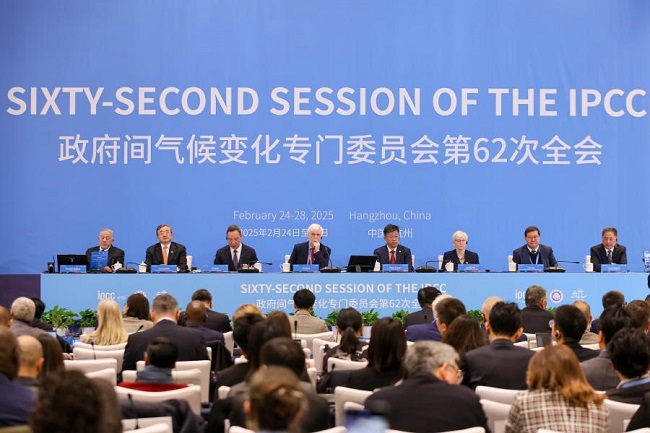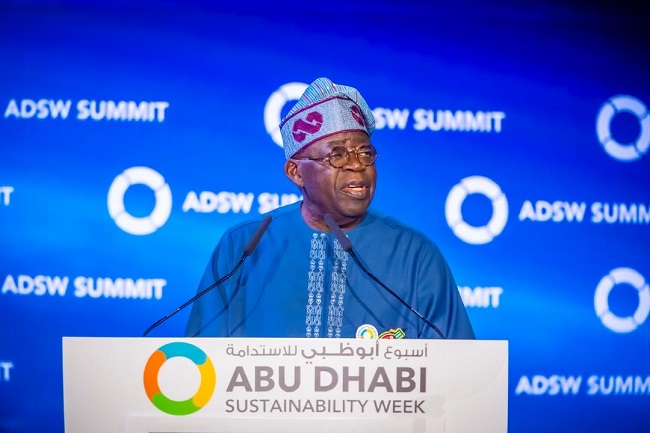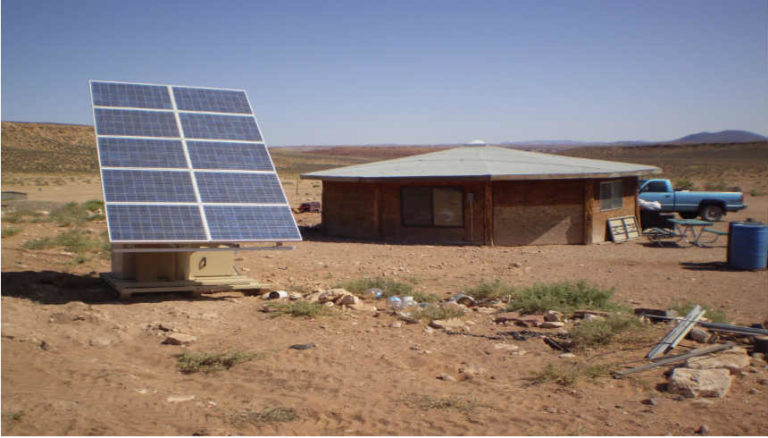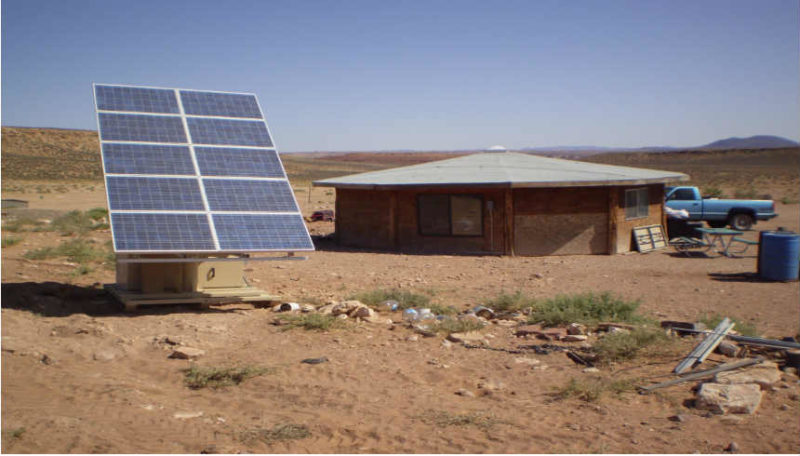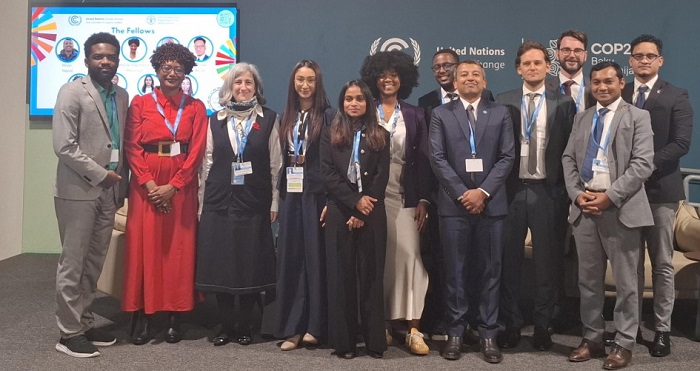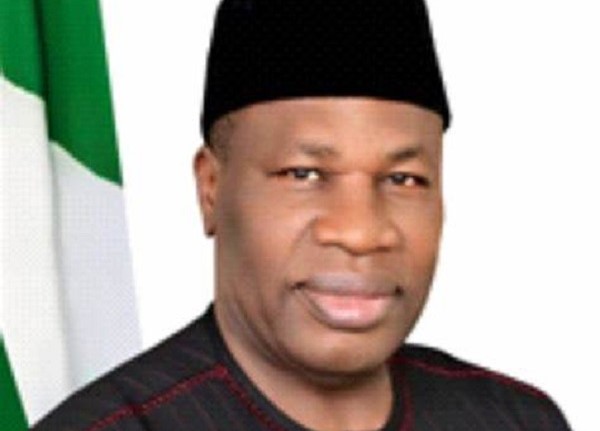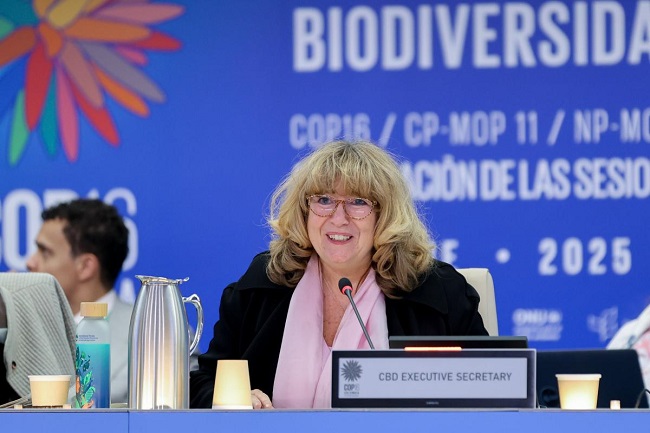Following the outcome of a one-day workshop organised by the University of Nigeria Resource and Environmental Policy Research Centre (UNN-REPRC), Prof. Nnaemeka Chukwuone was reported by the EnviroNews Nigeria (see https://www.environewsnigeria.com; Nigeria estimates over $2bn carbon market activation by 2030; published on January 20, 2025) to have projected a $2 billion carbon market in Nigeria by 2030.
Based on my thorough reading of the news report and the claims made by Prof. Nnaemeka, Director of UNN-REPRC, I have considered it important to make this short article in response and to clarify the confusions in the global carbon market for the sake of the Nigerian climate scientists and environmentalists. Climate change itself is a market in crisis, therefore no other market can solve climate change
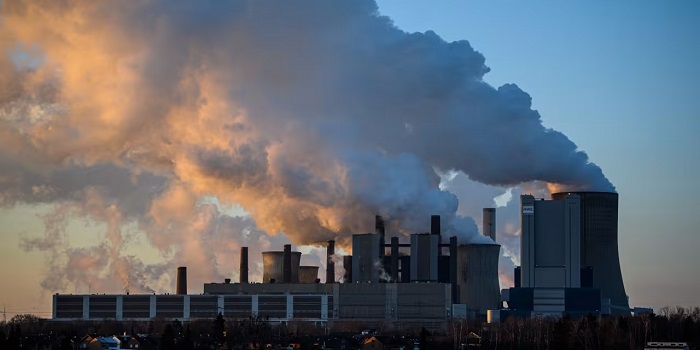
In the first instance, I have taken this response as a very instructive one, most especially when the entire African communities are deeply trapped in the carbon market crises; railroading Nigeria into the “fictitious capital” of the global carbon credits is a route that should be avoided, and the Nigerian climate scientists’ community should not mislead the government, and its agencies into such global crises.
As a research scientist that has been working in the interconnections of science and policy, and in exploring the political economy of the global nature markets and the international climate finance schemes, I feel the utmost concern to make these clarifications with evidence-based examples and case studies from various carbon market crises across both African countries and Europe.
Scholars, policy makers and governments across the world have generally agreed that carbon emitters should be held accountable for the climate crises their greed of exploitation has caused humanity, but then the persistent problem remains the fact that these polluters are not in any way ready to take responsibility and commit to variously existing climate action agreements; one of the major one being the Paris Agreement of 2015.
Unfortunately, the Paris Agreement suffers a double jeopardy when global south and especially G20 countries refused to pay up their climate debt – a blatant implementation failure to the general agreement of financing climate action in developing countries. While the Paris Agreement was in process, and governments were negotiating for implementation strategies and commitments, the concept of “climate debt” emerges. This is the total cost of carbon dioxide emissions imposed on the global economy. In negotiating for the total climate debt, about 131 countries out of the 190 countries that are signatories to the Paris Agreement agreed to a projected sharing mechanism of the total estimated cost of damage caused by carbon emissions, which is measured in economic damage per ton of carbon emissions.
Going by this arrangement, the size of each country’s climate debt was measured by the size of its economy, how the country uses fossil fuels to generate carbon emissions, composition of its energy mix, and its overall environmental impacts. As of 2020, the International Monetary Fund in its publication confirmed that the global south as led by countries such as USA, China, India, Japan, and the European Union has exceeded by far the amount of climate debt earmarked for them, while countries in the global north, the developing countries of course, could not even use up to 50% of their climate debt.
Therefore, these countries in the global south need to pay about $20 trillion of their climate debt excesses to developing countries in terms of climate finance and support climate actions in developing countries. This climate debt arrangement is not aid, not a grant, it was the collective agreement by these 131 countries following the Paris Agreement of 2015.
How then do we arrive at the juncture of carbon market instead of pursuing the global north to pay up their climate debt commitment? To be more holistic about the veracity of the carbon market, we need to patiently trace it to the genesis of cap-and-trade regulations of 1977 in the USA. In history, the USA was the first to establish a “Cap and Trade” regulation to govern carbon emission regulations and force polluters to pay for their carbon emissions. Unfortunately, eight years after the institutionalisation of the USA cap and trade regulations, carbon emissions increased sporadically, and this necessitated one of the reasons for the Kyoto Protocol of 1997.
With the results of the Kyoto Protocol, the earlier arrangement of cap and trade in the USA became institutionalised and adopted by other countries. However, these was further complicated with the unstable price of carbon and commercialisation of pollutions which was inefficiently implemented. Though regulations are constituted to guide the cap-and-trade market, carbon leakage thwarted the regulations.
Despite increased regulations and enforcement of strict deterrent, carbon emissions from companies keep going uncontrollably. In advancement of this, the European Union between 2012 and 2015 also instituted an Emission Trade System (ETS) which was similar to USA cap-and-trade regulations. As is the usual character of big businesses and multinationals, the EU’s ETS regulation suffered some setbacks in not less than five years of entry into force; companies were shifting their base of production to jurisdictions of less carbon price or no regulations at all. As a result, the EU introduced carbon border control which checkmated carbon price differences by putting an extra tariff on all goods imported to the EU.
With this new regulation, goods and products entering the EU from areas of no carbon emission control are liable to face additional tariff called “carbon tax”. The EU further places strict regulations to protect carbon prices but amid this strict policy on price regulation, carbon price nosedived from 60 Euros in 2019 to less than 20 Euros in 2023. Currently, the EU has substituted the ETS with a brand-new EU Green Deal. Let us keenly observed that from the gradual collapse of cap-and-trade in the USA to the natural death of the EU Emission Trade System, the carbon market crises continue to deepen.
The collapse of the cap-and-trade and the Emission Trading system did not only prove the failure of the financialisation of environmental pollution, it also testified to the fact that a fictious capital cannot be reinvented in the control of carbon emissions. The winners of this carbon market crises remain the polluters and their financial brokers – we have seen this in USA between 1977 and 1997, and in the EU between 2012 and 2023. What therefore is new in the re-emergence of carbon market in the Post Paris Agreement era?
The carbon market system has been divided into compliance carbon market and the voluntary carbon market. In the compliance carbon market, the government already placed a regulation on the amount of carbon and fossil fuels to be emitted by a company, and such companies operating within that jurisdiction must not go beyond the cap or limit. But in the voluntary carbon market, there is no regulation. Companies are free to emit as much as they can. Unfortunately, African countries have been categorised for the voluntary carbon market scheme while developed countries that are holding back huge amount of climate debt are now categorised as compliance carbon market.
As a result, companies operating in the global north – across developed countries – can come to African countries to offset their carbon emissions by buying a plantation or a forested area. How can we scientifically prove that a plantation in Edo State, Nigeria, can offset carbon emission of a company operating in Europe or in America? What pricing mechanisms has the UNN- REPRC established that confirms that Nigeria’s carbon market will be worth $2 billion by 2030?
Generally, scientists have criticised the entire idea of carbon market. While some have also praised the carbon market as a good economic strategy to conserve and protect the environment, the Interpol has as well recognised the scheme as “the next global white-collar crime”.
In the words of Liz Mwangi (2023) of the University of Cape Town and Waring, a senior lecturer of climate change at the Imperial College, London, “there can never be enough trees and forest in the world to offset carbon emissions” (with some emphasis added). The truth in Prof Waring’s comments, and that of Liz Mwangi can be justified by the current position of Nigeria’s forest cover.
Quoting from the World Bank’s development data indicators, Nigeria’s total forest area was reported at 213,004 sq.km in 2022, which was about 23.39% of land area and of which our total agricultural land stood at 76.6% of land area. Due to rapid industrial development, unregulated real estate activities, Nigeria’s total forest cover rapidly change and make us lost about 47.5% forest cover.
In the midst of this, it is noteworthy that Nigeria’s agricultural development has also suffered some setbacks due to government poor funding and unregulated agricultural sector. This is seen in the large number of small holder farmers that dominated the country’s food production chain. Currently, about 80% of Nigeria’s agricultural food products are produced by over 90% of small holder farmers who operates from their local communities and rural areas across the country, still with crude implements and agricultural tools.
A national carbon market project will therefore mean displacing this large number of small holder farmers and increasing food insecurity in the country, hence poverty as well will skyrocket while carbon credit moguls and their financial brokers smile to the bank.
To further complicate the global climate crisis is the mass extinction of world biodiversity. In 2023, the Intergovernmental Science Policy Platform on Biodiversity and Ecosystem Services in its global biodiversity assessment report confirmed that about 1 million species are currently in danger of extinction. Out of this, the International Union for Conservation of Nature in 2024 confirmed about 100 species of this flora and fauna to be lost are in Nigeria.
Citing Liz Mwangi (2023) verbatim, “researchers at the University of California Berkeley’s Carbon Trading Project have further established that the current system of generating rainforest protection carbon credits is not fit for purpose and is only open to exploitation”. Other researchers have warned that “credit credibility seriously threatens forests”.
In reality, making Nigeria forests and lands available for carbon market is nothing but making indigenous lands and local communities sacrifice to carbon polluters from the global north. How can Nigeria ecological spaces and rich biodiversity resources be a tool for carbon offsetting to polluters whose companies operate in Europe and America? In answering this question, I refer to Davies (2022) when he described carbon market scheme as “a kind of violence that occurs gradually” a delayed destruction that is scattered across time and space, and which is not usually seen by violence by the exploiters and landgrabbers.
While this violence of carbon markets tends to expose the vulnerability of our natural resources, and the ecosystems of local communities, it further complicates the circumstances by fueling social conflicts, threatening livelihoods of local communities and increasing social pressures, including displacing an entire people from their source of survival. This example is typical of the aboriginal rural communities in Edo State where Okomu Wildlife Sanctuary and the Sakponba Rainforest Reserve covering over 2,000 hectares were lost to French companies because of an oil palm plantation. The Okpamakhin local communities of the Owan rainforest zone earlier this year protested the land grabbing gestapo which carbon market schemes have imposed on them.
As a matter of consensus, various scholars and researchers across Africa have established the copious crises inherent in the carbon market scheme. Therefore, we all have the responsibility not to see the carbon market scheme as a form of compensation from the global north. What is necessary and should be the focus of scientists and policy makers across the African countries are the questions surrounding the climate debt which global north still refused to honour.
In simpler terms, we can draw another evidence of the carbon market crises from Liberia, Kenya and Tanzania. In Liberia, just after the African Climate Change Summit in 2023, an Emirati company signed a deal with the Liberia government to concede 10% of his territory for a carbon offset project. Through the deal, the Emirati company, being one of the global oil and gas producers in the United Arab Emirates, is projected to offset its carbon emissions and also sell carbon credits to other polluters by harvesting carbon credits that would have been conserved and protected through the one million hectares of forest that has been acquired in Liberia.
In addition, we also have similar arrangements in Kenya, where thousands of hectares of local forests were concessioned under a lease arrangement with the government for carbon credits harvesting. The Kenya carbon market scheme has displaced about 1,000 indigenous communities. Across these scenarios, indigenous peoples and local community habitats were displaced and their land taken away from them for the purpose of carbon credits – a similar scenario that the aboriginal local communities are currently facing in Edo State.
Without going into much details of the African Carbon Market Initiative and the characteristics of its Steering Committee, it is clear that the carbon market scheme in Nigeria will further plunge local communities, and indigenous peoples into climate change chaos; exacerbate urban vulnerabilities, cause more displacements of people, increase climate injustice, and continue to deepen socio-economic disparities between the urban settlers and the poor settlers in rural communities.
No doubt, climate change does not exist in vacuum; and that is why it is a global issue. In addition, we have all been able to agree, without any iota of doubt or disagreement, that carbon emissions from developed countries in the global north are the primary cause of the world’s rising temperatures. This is a crisis that has put the global south countries at the receiving point. This fact has been acknowledged and accepted by various scientific bodies and epistemic communities in the climate science research space.
Rights to ecological spaces of indigenous communities is essential. Carbon trading threatens these rights, escalates food insecurity, and increase poverty of small holder farmers as they tend to cultivate carbon credit plantations and maintain it for the benefits of polluters who after harvesting their “grown carbon credits” share profits and dividends among financial brokers and project implementation agencies.
Economically, the projected $2 billion by 2030 of UNN-RERPC is far below the needed cost of climate action in Nigeria; and, can’t pay Nigeria’s total external debt to international financial organisations. Therefore, the projected $2 billion, aside being fictitious, is already consumed by Nigeria’s foreign debt. Nigeria’s total external debt in 2024 stood at N56. 02 trillion ($42.12 billion), plus a total domestic debt of N65. 65 trillion ($49.35 billion). How commensurate is the projected $2 billion carbon market by 2030?
The Nigeria climate change policy in all sincerity has provided alternative measures for mobilising climate finance. Accordingly, the national policy on climate action provided alternative measures of mobilsing $250 million worth of Green Bonds to “support national climate finance initiatives” and implement climate actions across multi-sectoral provisions including key areas such as environment, agriculture, power and energy efficiency, and transportation.
The mobilisation of $250 million worth of Green Bonds may appear little but then it is worth a productive start compared to subjecting our rapidly degrading forest cover to a fictitious carbon credit that, also, further increases socio-economic pressures of small holder famers.
This exactly I think the Nigerian scientific community should engage with and interrogate the interfaces between the national climate policy and use of available scientific evidence across the country to drive positive climate actions across board, without putting ourselves into the climate trap of the crises-ridden carbon market.
By Olusegun Michael Ogundele
Ogundele is a research scientist working on the interconnections of conservation science, and the science-policy interface in environmental governance. He is a member of the Nigerian Environmental Society, and the Sydney Environment Institute, University of Sydney, Australia. He currently writes from the University of Pannonia Centre for Circular Economy, Hungary. He can be reached at segunogundele@hotmail.com

